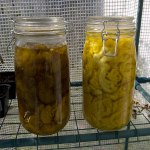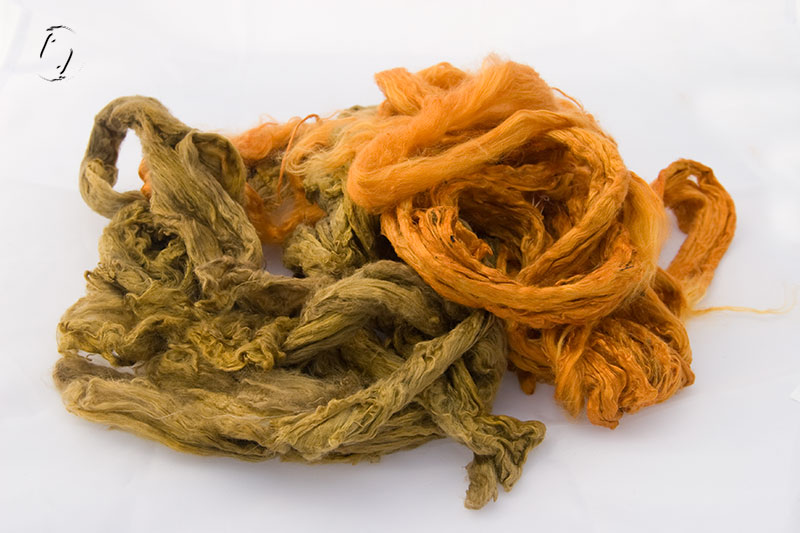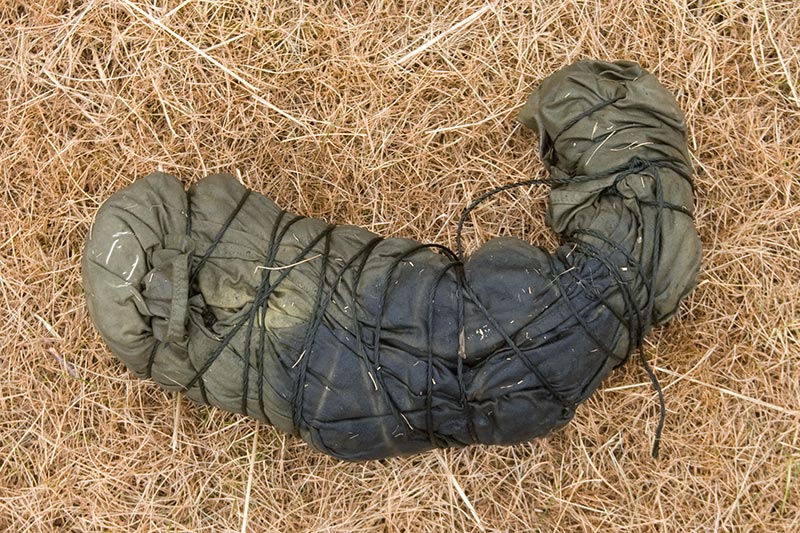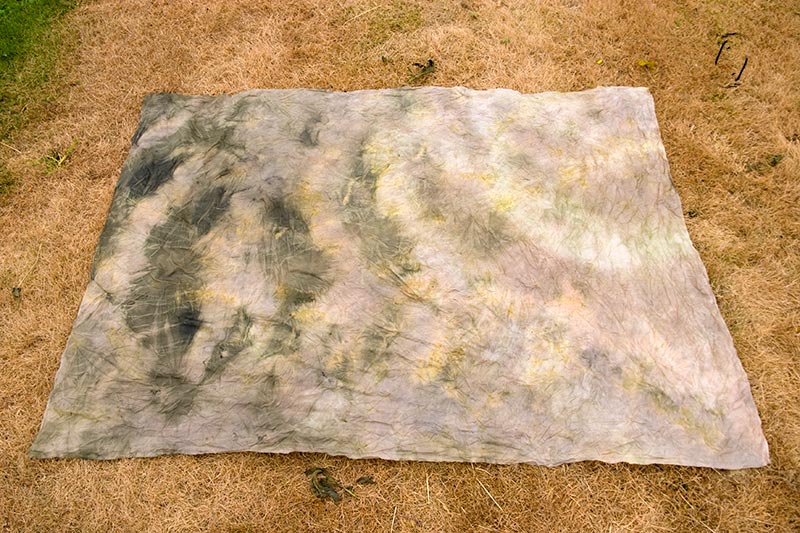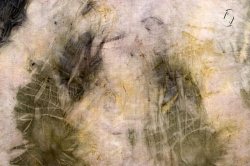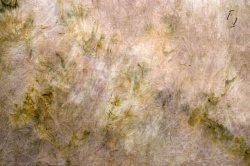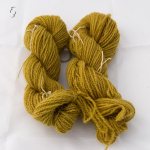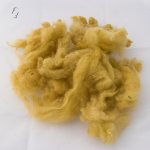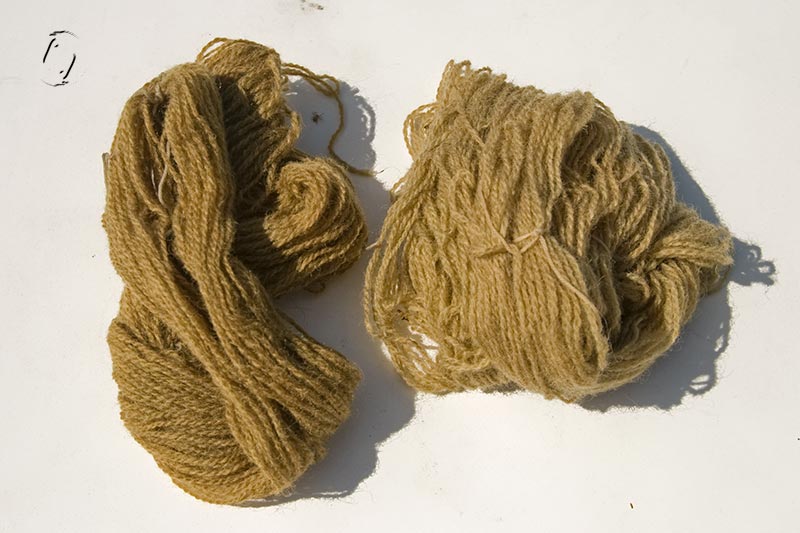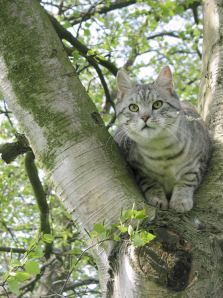Time to open the rest of the packages from August 14th. The first package was opened on August 21st and now awaiting further experiments…
The sheet on the right was previously washed with soda, cooked with sumak leaves and was soaking in water with iron while rolled up with celandine. The pillow case similar although no tannin before but soaking in water with oak leaves while printing.
Discoveries so far:
- Oak leaves = nice clear prints
- yellow flowers = vague yellow blotches
- Sage leaves = absolutely nothing. Maybe a pale shade of yellow?
- Celandine leaves in a heap = again, turns brown when sitting too long
- Put cloth in bucket of whatever = only the outside layer takes any colour at all.
- My mystery cloth just lost whatever I put on it previously and didn’t take anything from the leaves it had been rolled up with.
None of these cotton rags were properly mordanted, which is the next process I’ll be trying to see what the difference is. Tannin and aluminium acetate, some with sea water and aluminium. Some with iron as well, before or after. But I probably won’t get to actually dyeing them until next summer. Rhubarb leaves will be on the menu as well.
Another set is brewing – hoping for prints from lupine leaves among other things.
Funny thing though, the celandine dyed sheet is brown – but when put into water again, the water turns yellow.
â Leave a Comment
Plantefarvning på stof
Tid til at åbne de sidste pakker jeg præparerede d. 14. august. Den første omtalte jeg d. 21. august, den er nu tør og afventer yderligere eksperimenter på et eller andet tidspunkt.
Der kom ikke sÃ¥ meget ud af det, svaleurt giver stadig brun ved langtidsfarvning og kun egebladene lavede print pÃ¥ stoffet. Det ene stykke stof mistede de print det havde inden og er nu næsten “rent”! Jeg ved ikke helt hvad det er lavet af, det er en slags kanvas og virker ikke syntetisk, mÃ¥ske hør?




